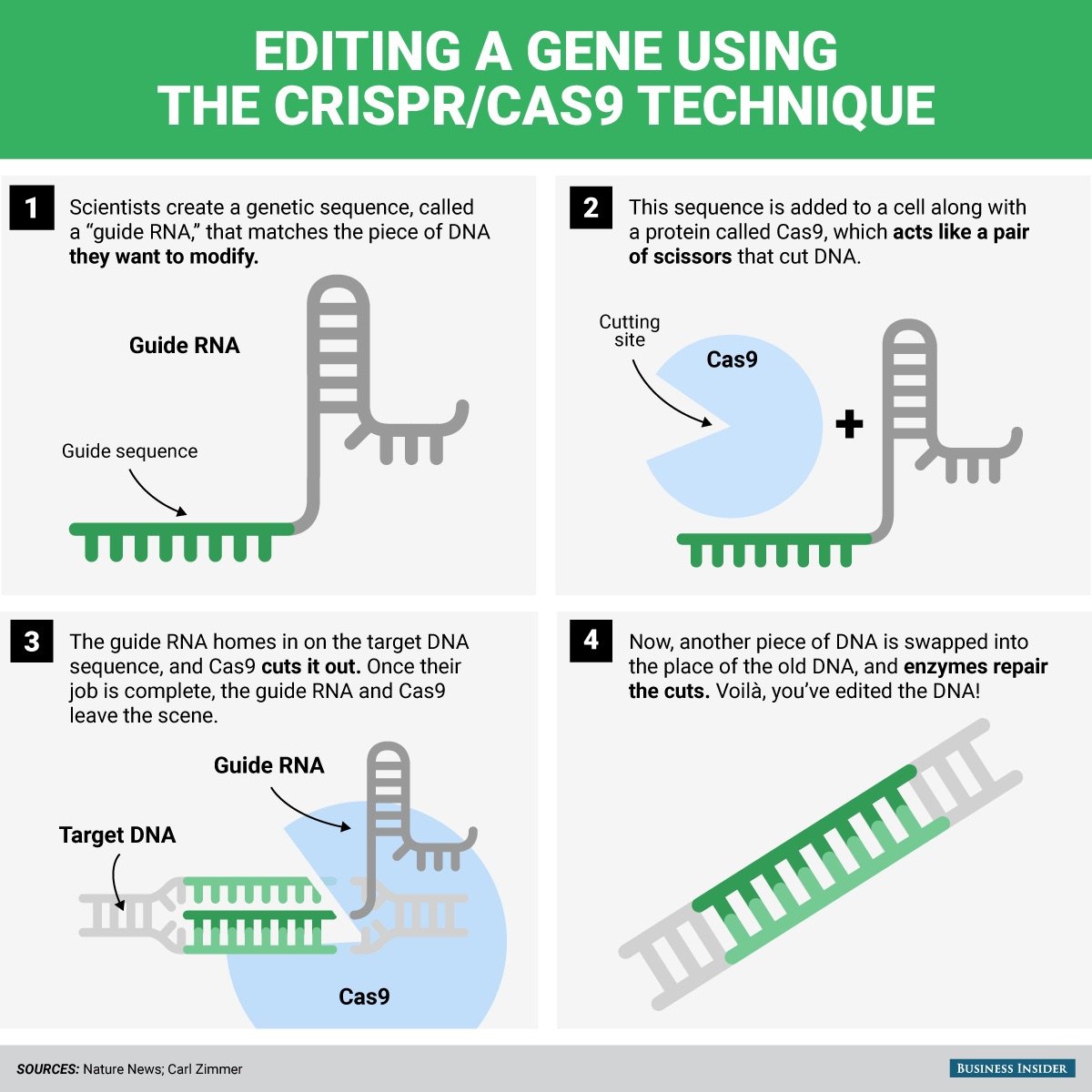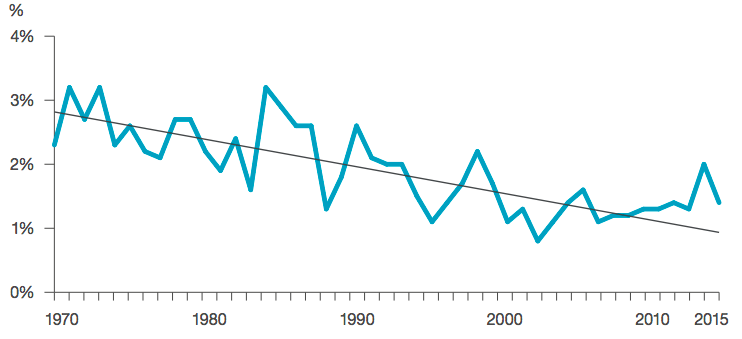One of the most significant scientific breakthroughs of 2016, and arguably for the next decade, is a powerful new gene-editing technology known as CRISPR/Cas9. This innovation in genetic modification has enabled scientists to customize organisms with an unprecedented precision in a matter of days rather than months or years.
Scientists have figured out how to exploit a quirk in the immune system of bacteria to edit genes in other organisms. How? On the surface, CRISPR harnesses the immune system of bacteria, making it easy, cheap and fast to move genes around and customize their effects. This is a powerful new tool to modify what characteristics are expressed in plants, animals and even humans. Such genetic modification of a single gene cost thousands of dollars and several months of development only a decade ago. With CRISPR, this modification occurs in a matter of hours and costs a mere $75.
How the CRISPR/Cas9 Technique Works
 Source: Business Insider (2017)
Source: Business Insider (2017)
After only three years with the technique, researchers around the world have reversed mutations that cause blindness, stopped cancer cells from multiplying and made cells impervious to the virus that causes AIDS. Bioengineers are using CRISPR to alter the DNA of yeast so that it consumes plant matter and excretes ethanol, offering a potential avenue for ending our reliance on petrochemicals. Scientists have also used this technique to edit bone marrow cells to treat sickle-cell anaemia. In future, CRISPR will help us figure out what genes actually do, identify new treatments for genetic diseases and destroy viruses. They also have the potential to strengthen food security.
Using CRISPR, agronomists have made wheat invulnerable to killer fungi like powdery mildew, hinting at engineered staple crops that can feed an increasing population on an ever-warmer planet. The risk here is that relying on these technologies will blind us to some of the very real problems facing modern agriculture today, problems that are rapidly undermining the previous round of technological innovation experienced during the first Green Revolution. While global crop yields indeed rose during the early decades of this period, famously saving one billion people from starvation, the pace of productivity is now falling. Researchers have found that up to 39% of land around the world growing maize, rice, wheat and soybean, yields have either failed to improve, stagnated after initial gains or collapsed in the period between 1961-2008.
Crop Yield Growth is Slowing Around the World
 Source: USDA (2016)
Source: USDA (2016)
We learned the hard way that the innovations of the First Green Revolution ultimately degraded both human and natural capital. Pests are adapting to chemical pest management faster than ever. Synthetic fertilisers are destroying the soil and its nutrient-recycling potential. This creates a snowball-effect of increasing resistance leading to more pervasive synthetic pesticide use, thereby generating more costs for farmers and increasing levels of environmental degradation. While CRISPR has significant potential to reshape the fields of medicine, energy and agriculture, there are consequences to customizing the genetic code of orgasnisms that we do not yet fully understand.
By no means are we advocating scientific stagnation in terms of agriculture, but rather, we are supporting the use of modern science and technology with Mother Nature to achieve an optimal food production system. Diversified and agro-ecological systems of agriculture, those that rely on natural alternatives for crop care, are already proving to be effective, profitable for farmers, more nutritional for consumers and safer for the environment. Once combined with the latest scientific breakthroughs, we will be better able to create a global food system that works for everyone. We must use science to further our understanding of nature and to maximize its capabilities through sustainable best practice, enhanced by new wisdom and technology. It is our hope that the awareness of the consumer will drive the change towards modern, scientific and educated practices across our lives to enable a sustainable, healthy and vibrant habitat for many generations to come.
